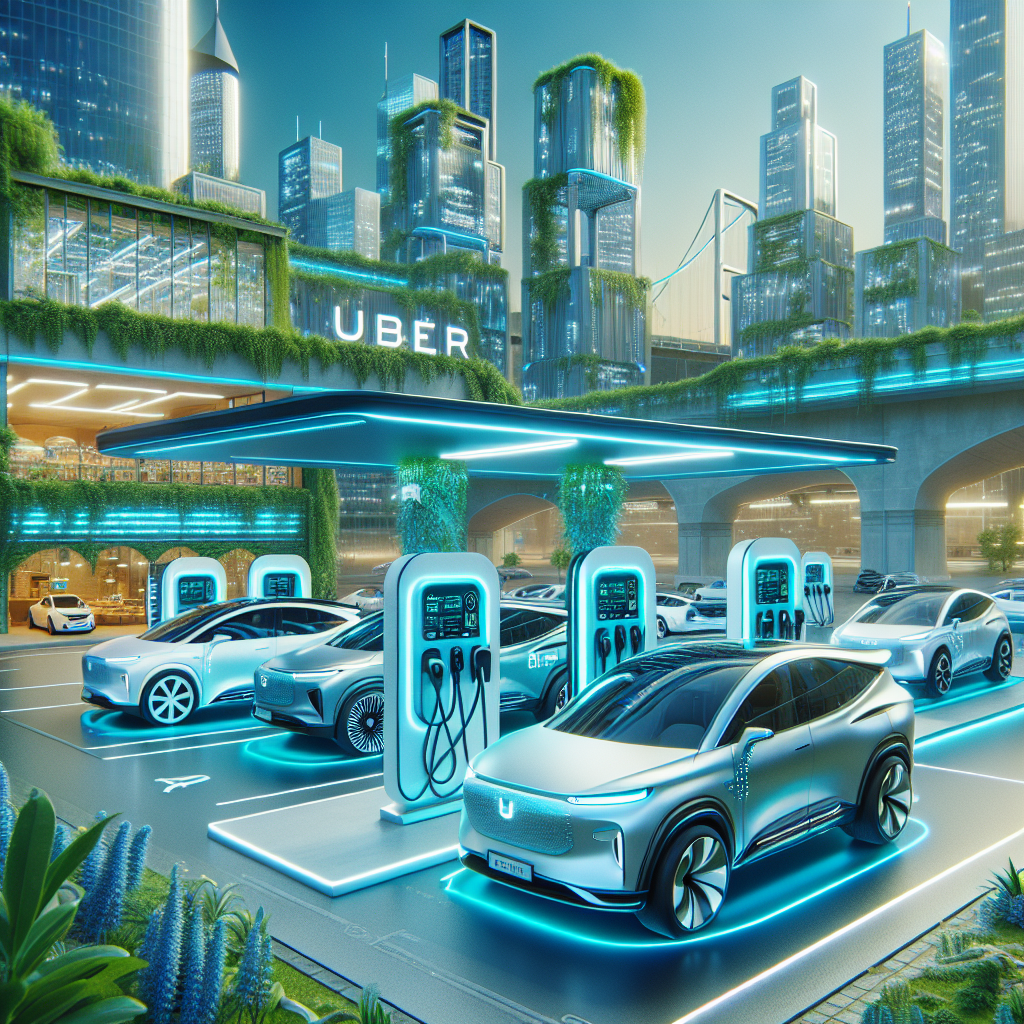Uber’s EV Ride hailing Revolution: How It’s Maturing the Future of Transportation
As the world grapples with the urgent need to shift towards more sustainable practices, Uber has swiftly adapted its business model to align with environmental goals. This article delves into the rapid evolution of Uber’s electric vehicle (EV) ride hailing service, its profound impact on sustainable transportation, and what the maturation of this service means for the future of the ride-sharing industry.
The Rise of EVs in Ride hailing
Uber’s integration of electric vehicles into its ride hailing service marks a significant milestone in the company’s journey towards greening transportation. This shift was motivated by mounting regulatory pressures, consumer demand for environmentally friendly options, and Uber’s own commitment to achieving a zero-emissions platform by 2030. By incorporating EVs, Uber not only reduces its carbon footprint but also offers cost savings in terms of fuel efficiency and lower maintenance costs.
The transition has been supported by partnerships with major EV manufacturers like Tesla and Nissan, as well as Uber’s initiatives to provide drivers with incentives to switch to electric. The introduction of the Uber Green option in major cities enables riders to specifically choose electric or hybrid vehicles, further promoting the adoption of clean transportation alternatives.
Impact on Sustainable Transportation
The economic and environmental benefits of Uber’s EV transition are substantial. According to a study by the International Council on Clean Transportation, ride hailing vehicles generate more emissions per mile than private cars, primarily due to the extra miles traveled between rides. By switching to EVs, Uber drastically reduces its carbon emissions, contributing to cleaner air quality in urban environments.
Moreover, the impact of EVs extends beyond environmental factors; they also promote economic sustainability by lowering operational costs for drivers, who can save significantly on fuel and maintenance expenses. In turn, these savings can be passed on to consumers, making sustainable travel more accessible.
Challenges and Solutions in Transition
Despite the promising benefits, Uber faces several challenges in transitioning to a predominantly electric fleet. One of the primary obstacles is the lack of robust charging infrastructure. This is particularly problematic in less urbanized areas where charging stations are scarce.
To combat this, Uber has partnered with major energy companies to expand charging networks and introduced the EV Charging Access Program, which offers affordable charging solutions. Driver adaptation also poses a challenge, as some are hesitant to switch due to the upfront costs of EVs. Uber addresses this through subsidies and low-interest loans to ease the transition.
Additionally, there are misconceptions among clients regarding the performance and reliability of EVs. Through educational campaigns and positive user experiences, Uber is working to shift public perception and demonstrate the efficiency of electric vehicles.
The Future of Ride-Sharing with EVs
As Uber continues to commit to an electric future, the ride-sharing industry is set for transformative changes. Technological advancements, such as autonomous electric vehicles and improved battery technologies, promise even greater efficiency and lower costs.
Market trends indicate that consumers are increasingly valuing eco-conscious services, driving demand for green transportation options. This opens up opportunities for ride-sharing companies to differentiate themselves through sustainability. As such, Uber’s mature EV ride hailing service paves the way for the mainstream adoption of electric mobility, positioning the company as a leader in the sustainable transportation landscape.
Conclusion:
In conclusion, Uber’s ongoing efforts to transform its ride hailing service through the integration of electric vehicles underscores the importance of sustainable transportation solutions. As the company’s EV initiatives mature, they not only revolutionize their operational model but also set a precedent for the entire ride-sharing industry. By choosing EV options for their travels, consumers can contribute to this positive change, supporting eco-friendly practices and helping to build a cleaner, greener future.





